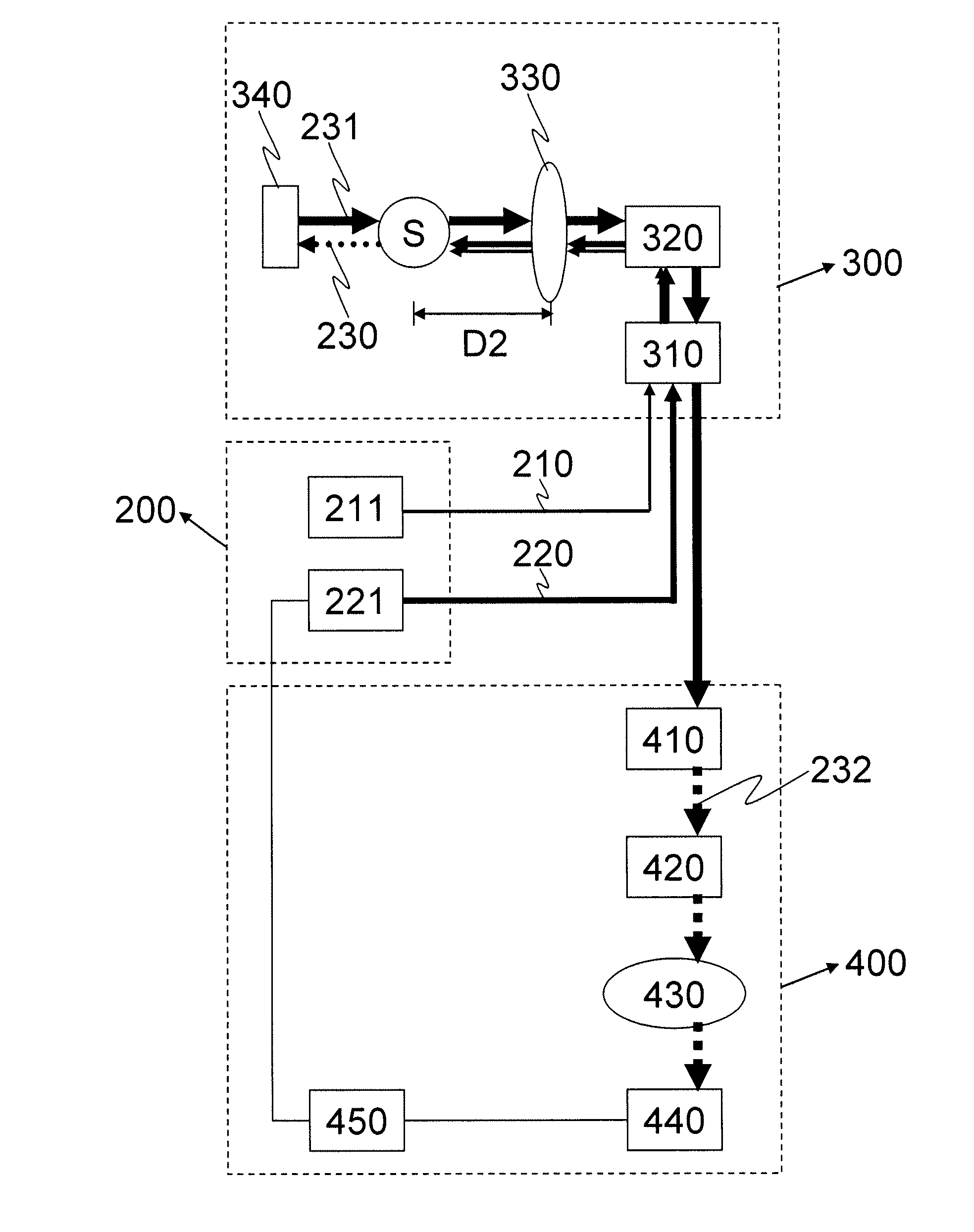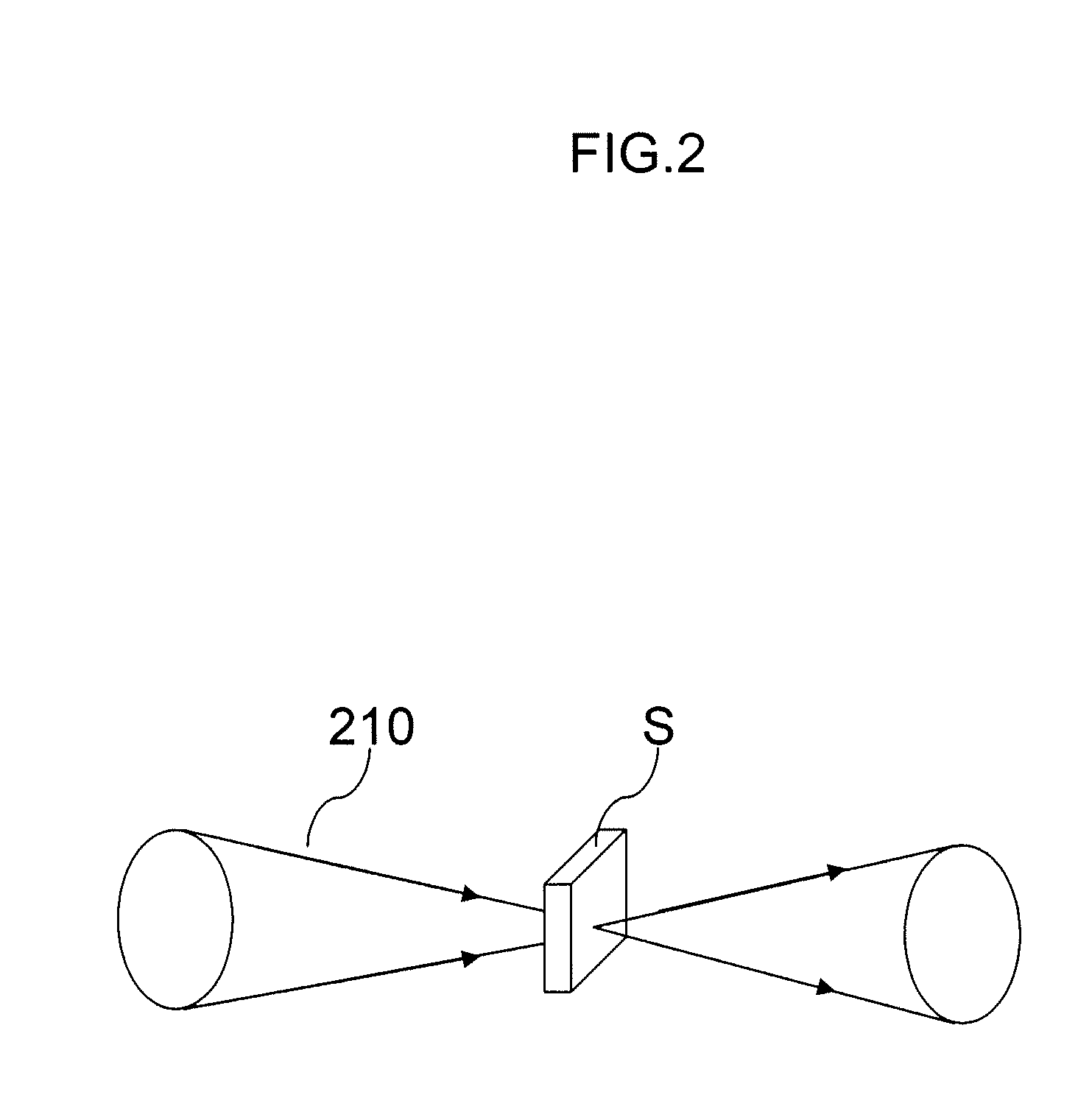Stimulated emission-based optical detection system
a technology of optical detection and simulation, applied in the direction of optical radiation measurement, luminescent dosimeter, instruments, etc., can solve the problems of easy damage to samples, weak optical signal strength above the optical signal, and high cost of highly sensitive optical detectors
- Summary
- Abstract
- Description
- Claims
- Application Information
AI Technical Summary
Benefits of technology
Problems solved by technology
Method used
Image
Examples
Embodiment Construction
[0022]The optical detection system capable of long-distance detection of weak signals in the proposed invention solves the problems of prior art. The weak signals comprise all types, and in the embodiment, fluorescent signals are taken as examples. The weak signals are not limited fluorescent signals in the invention.
[0023]A number of ways are provided for a fluorescent molecule being exited to an exited state from its ground states. These ways include non-radiative, spontaneous transition, stimulated emission, and energy transfer methods.
[0024]The invention detects the energy level transition of the fluorescent molecules by analyzing the stimulated emission signal. Since the stimulated photons are of high coherence, they are also highly directional. As a result, the optical detection system in this invention overcomes the limitations of numerical aperture in collecting weak signals efficiently and further solves the problem of short working distance between the sample and the objec...
PUM
 Login to View More
Login to View More Abstract
Description
Claims
Application Information
 Login to View More
Login to View More - R&D
- Intellectual Property
- Life Sciences
- Materials
- Tech Scout
- Unparalleled Data Quality
- Higher Quality Content
- 60% Fewer Hallucinations
Browse by: Latest US Patents, China's latest patents, Technical Efficacy Thesaurus, Application Domain, Technology Topic, Popular Technical Reports.
© 2025 PatSnap. All rights reserved.Legal|Privacy policy|Modern Slavery Act Transparency Statement|Sitemap|About US| Contact US: help@patsnap.com



